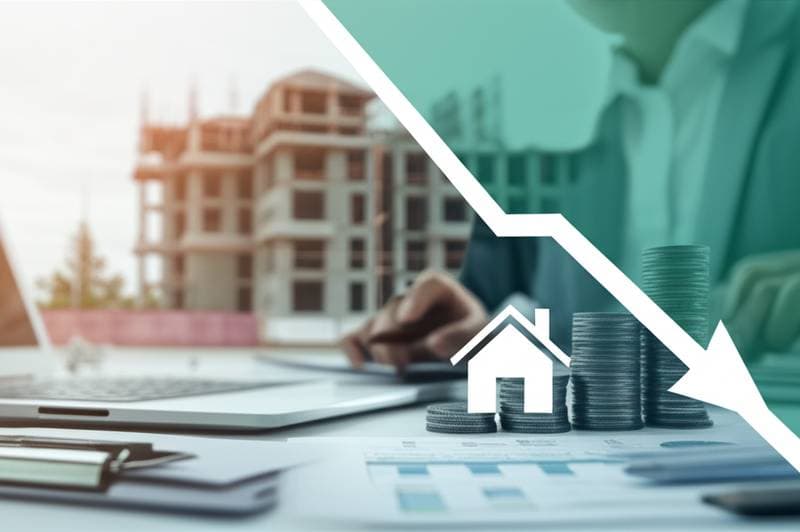Key Takeaways
- Builder rate buydowns enable buyers to secure reduced mortgage payments from the outset of homeownership.
- These incentives can yield thousands in interest savings while maintaining stable upfront budgets.
- A clear grasp of buydown mechanics empowers buyers to leverage them effectively for better deals.
Benefits That Attract Homebuyers to Builder Rate Buydowns
Builder rate buydowns deliver immediate financial relief through several key advantages.
- Monthly payments decrease starting on closing day, easing the transition into homeownership.
- Lower interest rates improve debt-to-income ratios, facilitating smoother loan approvals.
- Reduced financial pressure allows buyers to adapt to additional new-home costs without strain.
- Builders frequently pair buydowns with assistance for closing costs or allowances for home upgrades.
These features make buydowns a compelling choice for navigating high-interest environments.
Reasons Builders Introduce Rate Buydowns in the Current Market
Elevated mortgage rates challenge homebuilders by deterring potential buyers concerned about affordability. Rather than slashing home prices, which could undermine property values, builders opt for rate buydowns as an alternative incentive. This approach preserves pricing integrity while providing buyers with manageable payment structures.
For builders, buydowns serve as a strategic tool to sustain sales momentum and market positioning. For buyers, they represent a valuable opportunity to acquire desirable new construction homes at effective rates that align with personal budgets. In 2025, this tactic gains prominence as rates stabilize but remain above historical lows, prompting builders to compete more aggressively.
Understanding Temporary Versus Permanent Buydowns
Rate buydowns fall into two primary categories: temporary and permanent. Temporary buydowns reduce the interest rate for an initial period, typically one to three years, after which the rate adjusts to the prevailing market level. Permanent buydowns, less common, lock in a lower rate for the loan's full term, offering long-term stability but often at a higher upfront cost covered by the builder.
Buyers must evaluate their financial trajectory when selecting between these options. A temporary buydown suits those anticipating income growth to handle future increases, while a permanent version appeals to individuals seeking predictable payments over decades. Builders fund these through reserves or lender partnerships, ensuring the benefit passes directly to the buyer without altering the home's listed price.
Common Pitfalls to Avoid with Builder Rate Buydowns
While buydowns offer clear advantages, oversights can diminish their value. Buyers should approach these incentives with diligence to ensure they deliver true savings.
-
Examine the Post-Buydown Rate Adjustment. Temporary buydowns lead to payment increases after the subsidized period ends. Verify your ability to afford the full rate to prevent future financial strain.
-
Verify the Funding Source. Confirm the builder absorbs the buydown cost entirely. If expenses transfer to the loan balance or purchase price, the apparent savings evaporate.
-
Shop Multiple Lenders. Builder-preferred lenders may impose restrictions. Obtain quotes from independent providers to potentially secure comparable or superior terms without limitations.
-
Clarify Incentive Combinations. Inquire whether buydowns integrate with other offers, such as closing cost credits or upgrade allowances. Secure all details in the contract to maximize overall value.
By addressing these areas, buyers protect their interests and extract the full potential from builder promotions.
Strategies to Customize and Enhance Buydown Incentives
Buyers hold leverage to tailor buydown offers to their needs. Builders often maintain flexibility in allocating incentive funds, allowing redirection from rates to other priorities.
- Request applications toward closing costs if rate reductions prove less critical, freeing up cash for immediate expenses.
- Negotiate for design or feature upgrades, converting monetary credits into personalized home improvements valued at thousands.
- Explore stacking multiple incentives, such as combining a buydown with appliance packages, to amplify the deal's appeal.
Persistence in discussions yields results; many buyers discover untapped options simply by voicing preferences early in the process.
Balancing Short-Term Savings with Long-Term Financial Planning
Prioritize incentives that align with broader objectives beyond the lowest initial payment. A marginally higher monthly amount may justify securing a property in an ideal location with strong appreciation potential.
Consider factors like neighborhood growth, resale value, and personal lifestyle fit. For instance, investing in energy-efficient upgrades through incentive reallocations could lower utility bills over time, offsetting any rate differences. This holistic view ensures the buydown supports enduring financial health rather than temporary relief.
Maximizing the Impact of Your Builder Buydown
Approach builder buydowns as integral negotiation elements in the homebuying process. These incentives prove negotiable and add substantial value when handled strategically.
Engage professionals, such as mortgage advisors, to model scenarios and quantify savings. Document every agreement meticulously to avoid discrepancies at closing. Ultimately, a well-utilized buydown not only simplifies affordability but also positions buyers for confident, informed homeownership in 2025 and beyond.
